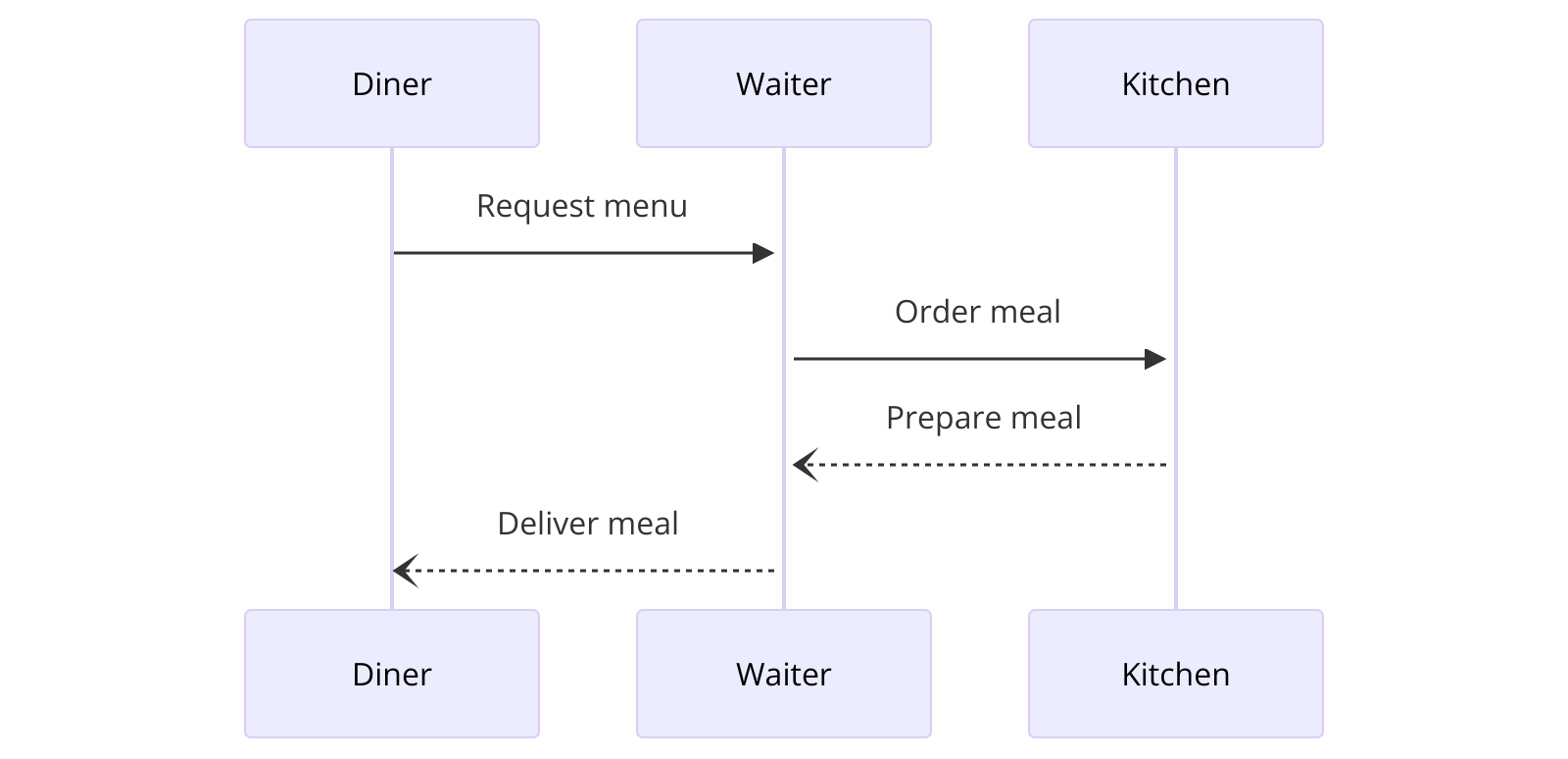What is an API?
 Kusal Tharindu
Kusal Tharindu
Introduction
In today's digital age, APIs, or Application Programming Interfaces, are the invisible backbone that supports the seamless operation of the technologies we use daily. At their core, APIs allow different software applications to communicate with each other, enabling a myriad of services and functionalities we've come to rely on. Whether it's fetching weather data, processing online payments, or updating social media statuses, APIs work tirelessly behind the scenes to make these actions possible. For anyone just starting to explore the world of technology, understanding APIs is a crucial step towards demystifying how digital services operate and interact.
How do APIs work?
Imagine you're at a restaurant with a menu of choices to order from. In this scenario, the kitchen is the system that will prepare your order, but you need a way to communicate your meal choice. Enter the waiter, or in our analogy, the API. The waiter (API) takes your request (a call for data or service) and translates it into a format the kitchen (the system) understands. Once the kitchen has prepared your meal, the waiter delivers it back to you. Similarly, an API receives requests from an application, interprets them, and returns the requested data or service from the server. This process allows different software systems to exchange data and functionalities smoothly, even if they're built on different platforms.

Let's proceed to the next sections, covering the history of APIs and their types, to provide a comprehensive understanding for beginners.
The History of APIs
The concept of APIs isn't new; it has evolved significantly since its inception. The history of APIs dates back to the early days of computing, where software interfaces allowed different programs to communicate on the same computer. However, the modern era of APIs began in the late 1990s and early 2000s with the advent of the internet. The first major milestone was the release of the SOAP (Simple Object Access Protocol) by Microsoft in 1998, which allowed programs on different machines to communicate over the Internet.
As the web developed, the need for more open and standardized APIs became apparent. This led to the creation of REST (Representational State Transfer) in 2000 by Roy Fielding, which quickly became popular due to its simplicity and efficiency over the web. RESTful APIs now dominate web services, allowing for easier integration and communication between online platforms.
Different Types of APIs and Their Uses
APIs come in various forms, each serving specific purposes. Here's a breakdown of the main types:
Public APIs: Also known as Open APIs, they are available for any developer to use with minimal restrictions. They facilitate external developers in creating applications that can access a service's features or data. Examples include the Twitter API and the Google Maps API.
Private APIs: These are used internally within an organization, enabling different teams to improve their products and services by leveraging each other's tools and data securely.
Partner APIs: Offered to specific business partners, these APIs provide a controlled way of sharing data or services externally, under specific agreements that typically include enhanced support and service level agreements (SLAs).
Web APIs: These are designed for the web and typically interact with HTTP, allowing for operations such as GET, POST, PUT, and DELETE. They are the most common form of APIs and include RESTful, SOAP, and GraphQL APIs.
Library Based APIs: These provide a library of functions and procedures that can be called and executed within a software application.
Class-Based APIs: These define the methods and properties that can be used for creating objects or classes in programming languages.
RESTful APIs: A subset of Web APIs that strictly adhere to REST architectural principles, offering a lightweight and efficient way for applications to communicate over the internet.
Each type of API serves a unique role in the digital ecosystem, facilitating the seamless operation, integration, and expansion of software applications and services.
Common API Use Cases
APIs have a wide range of applications across various industries. Here are some common use cases:
Integration of Third-Party Services: APIs allow websites and applications to integrate with social media platforms, payment gateways, and other external services, enhancing functionality without having to build these services from scratch.
Data Sharing and Management: APIs enable businesses to share and manage their data across different systems, improving efficiency and collaboration within and between organizations.
Cloud Computing: APIs are fundamental to cloud services, allowing users to interact with cloud resources and services programmatically, facilitating automation and scalability.
Real-World Examples of APIs
To illustrate the power and versatility of APIs, here are some real-world examples:
Google Maps API: Allows businesses to integrate Google Maps into their websites or applications, enabling features like location tracking, route planning, and interactive maps.
Twitter API: Enables developers to access Twitter's functionalities, allowing for the automation of tweets, analysis of social media trends, and integration of Twitter features into other applications.
Other Common Questions About APIs
Are APIs Secure?: Security is a crucial aspect of API design. Techniques like authentication tokens, encryption, and rate limiting are used to protect data and ensure that only authorized users can access the API.
How Can I Access an API?: Accessing an API usually involves registering for an API key or token from the provider and using it to make requests according to the API's documentation.
Is There a Cost Involved?: While many APIs are free, some require a subscription or charge based on the volume of requests made.
Conclusion
APIs are the glue that holds the digital world together, enabling software applications to communicate, share data, and enhance their capabilities. Understanding APIs is fundamental for anyone looking to navigate the tech landscape, whether you're a developer, business professional, or just a curious learner. By demystifying how APIs work, their history, types, and applications, we hope this blog post has provided you with a solid foundation to explore the vast possibilities APIs offer.
This comprehensive guide should serve as a valuable resource for beginners, offering insights into the workings, history, types, and real-world applications of APIs. Remember, the journey into the world of APIs is ongoing, and there's always more to learn and explore.
Subscribe to my newsletter
Read articles from Kusal Tharindu directly inside your inbox. Subscribe to the newsletter, and don't miss out.
Written by

Kusal Tharindu
Kusal Tharindu
As a dedicated DevOps Engineer, I've immersed myself in the dynamic world of DevOps, sharing my insights through blogs to support the community. I aim to simplify complex processes, empowering both beginners and experts to navigate DevOps with confidence and ease, fostering collective growth in this ever-evolving field.